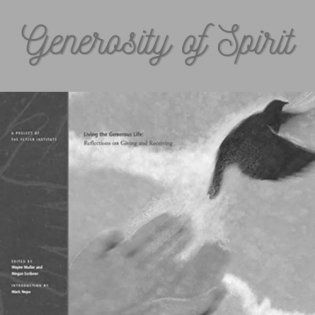Folktales from the Americas
Learners explore character traits and life lessons through folktales from various American cultures. The stories illustrate the impact of "paying a debt forward" rather than "paying it back."
The learner will:
- identify the historical and geographic settings of folktales.
- identify the message and connections to philanthropy.
- define serial reciprocity.
Youth access to these folktales (Learning to Give has permission to make these folktales available online to readers):
- "The Boy and His Donkey." Rael, Juan B., Jose, Griego y Maestas, and Rudolfo A. Anaya. Cuentos: Tales from the Hispanic Southwest. Santa Fe, NM: Museum of New Mexico Press, ©1980. Used with the permission of New Mexico Press.
- "Gratitude: The Hunter and the Antelope." Frobenius, Leo & Douglas C. Fox. African Genesis. Harrisburg, Pennsylvania: The Telegraph Press, ©1937. pp. 163-64. Used with the permission of Stackpole Books. http://www.stackpolebooks.com
- "The Harvest Birds los pájaros de la cosecha." Mariscal, Blanca López de. The Harvest Birds/Los pájaros de la cosecha. Emeryville, California: Children’s Book Press, ©1995. Used with the permission of the publisher, Children’s Book Press, San Francisco, CA. The Harvest Birds/Los pájaros de la cosecha. Story copyright ©1995 by Blanca López de Mariscal. Art copyright ©1995 by Enrique Flores. www.childrensbookpress.org.
en.wikipedia.org/wiki/Anansi - "The Hog." Rael, Juan B., Jose, Griego y Maestas, and Rudolfo A. Anaya. Cuentos Espanoles de Colorado y Nuevo Mexico: Spanish Folk Tales from Colorado and New Mexico. Santa Fe, NM: Museum of New Mexico Press, ©1980. p. 628, Volume II Used with the permission of New Mexico Press.
- Hyde, Catherine Ryan. Pay It Forward. Directed by Mimi Leder. 123 minutes. Warner Home Video, 2001. DVD. ASIN: B00005B4BI Rated: PG-13
- "The Trouble With Helping Out." Abrahams, Roger. African-American Folktales: Stories from Black Traditions in the New World. New York: Pantheon Books, ©1999. pp. 173-74. Used with the permission of the American Folklore Society. www.afsnet.org
Instructions
Anticipatory Set:
Put the following statement on the board: "One good turn deserves another." Ask the learners what this expression means. When is it used in every day life?
"The Trouble with Helping Out" is an African-American folktale from Suriname. On a map, locate Suriname’s absolute location (longitude and latitude) and relative location (general descriptors of where the place is located). Describe Suriname's physical characteristics and human characteristics.
Read "The Trouble with Helping Out" together and discuss the message and connection to philanthropy.
- Why is this a good title?
- In the story Hunter is helped by Anansi, the spider. Anansi myths originated in West Africa (Ghana) from the Ashanti people. Their stories spread to the Caribbean and South America through paths of slavery.
- Snake repays Hunter by saving his life while Hunter is in prison. This is an example of reciprocity, also known as "pay back" or "one good deed deserves another." Discuss everyday examples of reciprocity.
- When it isn't possible to repay a person’s generosity directly, another kind of pay back is called "serial reciprocity," in which persons pay it forward, helping someone else other than the person who did the original kindness. How is this an effective way to give?
Read "Gratitude: The Hunter and the Antelope" together and discuss the message and connection to philanthropy. This is an African story of the Nupe-speaking people of Niger and Nigeria. It is a folktale about an encounter between hunter, crocodile, and mongoose. Compare and contrast this folktale with "The Trouble with Helping Out." Is it possible that they are variations of the same story?
Explain that the next folktale, "The Harvest Birds," is a Mexican story related to farming. Read about the Three Sisters, which involves planting corn, beans and squash together in a supportive relationship that improves the production of all three plants.
- How is that relationship related to generosity?
- What clues are there in the story about how the other characters perceive Juan? Why don’t they take his dreams and requests seriously? Discuss examples of misinterpreting people in real life.
Juan Bautista Rael personally transcribed over 500 folk tales from the Spanish-American settlers. "The Hog," was one of these stories collected by Rael. Read the story together and discuss the message and connection to philanthropy.
Read this Southwestern U.S. story "A Boy and His Donkey" together and discuss the message and connection to philanthropy.
- The author builds into the story a technique of "character perception" through which we know whether or not the character is trustworthy based on the half of the apple he chooses. Are we always able to perceive goodness or evil in a person in real life? Which character showed "generosity of spirit"?
In reflection, discuss the variety of characters in the stories and identify the traits that represent the cultures of the Americas and explain why.
Do these stories have universal appeal? Would they be understood by someone who knew nothing of the cultures included in the stories?
Philanthropy Framework
-
Strand PHIL.I Definitions of Philanthropy
-
Standard DP 01. Define Philanthropy
-
Benchmark HS.2 Identify and discuss examples of philanthropy and charity in modern culture.
-
Benchmark HS.4 Define and give an example of serial reciprocity.
-
-
-
Strand PHIL.II Philanthropy and Civil Society
-
Standard PCS 02. Diverse Cultures
-
Benchmark HS.1 Analyze philanthropic traditions of diverse cultural groups and their contributions to civil society.
-
-
